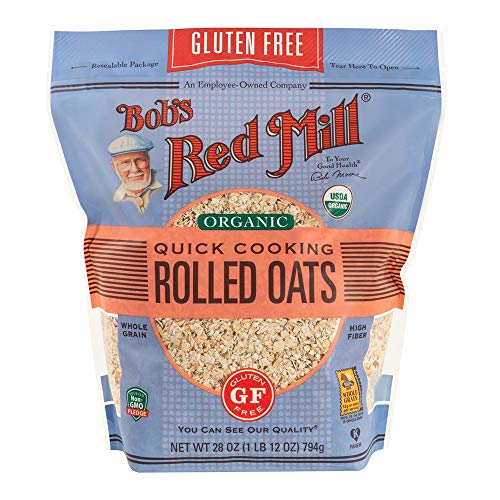Understanding Low FODMAP Food Stacking for a Happy Gut
Ever dream of a delicious, gut-friendly feast without the worry of post-meal discomfort? For those managing Irritable Bowel Syndrome (IBS), the Low FODMAP diet can be a source of symptom relief…if done correctly. FODMAPs are a group of fermentable carbohydrates found naturally in many fruits, vegetables, grains, and legumes. While beneficial for gut bacteria, some individuals with IBS experience discomfort when digesting them.
Fructans, galactans, mannitol, and polyols – these are some of the FODMAPs many individuals with IBS need to be mindful of. Fructans can be found in wheat, garlic, onions, and apples. Galactans are found in legumes like beans and lentils. Mannitol is in foods such as mushrooms and cauliflower, while polyols can be found in some fruits and artificial sweeteners. Understanding where these FODMAPs reside is key to building balanced, gut-friendly meals.
Navigating the Three Phases of the Low FODMAP Diet
The Low FODMAP diet includes three phases: elimination, challenge/reintroduction, and maintenance. It is not a dietary plan where individuals are meant to exclusively eat Low FODMAP foods for the rest of their lives; however, while completing the diet's elimination phase, choosing your food and beverages wisely is essential. This includes the portions of Low FODMAP food items.
Not only can some foods become moderate to high FODMAP foods with just the shake of the cereal box, but there have also been observations that (unlike some dietary plans where you can consume endless amounts of greenlit foods), ingesting multiple Low FODMAP servings (or green servings) in one sitting can produce symptoms in some individuals.
Hence, the concept of FODMAP stacking.
Now, this is not the time to panic if you are following a Low FODMAP diet or considering starting one. For those whose symptoms are well-controlled, there's generally no need to start worrying about tracking specific FODMAP quantities. However, if symptoms persist despite a Low FODMAP diet, considering FODMAP stacking may be worthwhile.
Assessing Individual FODMAP Tolerance: Why One Size Doesn’t Fit All
It's crucial to understand that FODMAP stacking's relevance varies among individuals, as everyone has a different threshold level of FODMAP tolerance. While some may experience IBS symptoms with multiple 'green servings' in one sitting, the conservative cut-offs set by Monash often provide effective symptom control for many, enabling a diverse and varied diet.
FODMAP amounts are cumulative, influencing the tolerance of a meal and whether symptoms are induced. The Monash FODMAP app employs a traffic light system to rate individual FODMAPs and overall FODMAP content. This system allows for the inclusion of more than one 'green serving' of food per sitting, recognizing the variability in individuals' FODMAP tolerance levels.
Generally, the concept of stacking pertains to a single sitting or meal, assuming meals are adequately spaced out. Allowing 2-3 hours between meals or snacks facilitates digestion and slows the rate at which the gut is exposed to FODMAPs. For those constantly snacking and experiencing IBS symptoms, spacing out meals may prove beneficial.
Safe & Savory Pairings: Mastering the Art of FODMAP-Friendly Food Combinations
Now, let's get creative! Here are some safe and delicious pairings to get you started:
Breakfast: Pair Low FODMAP lactose-free yogurt with strawberries and a sprinkle of nuts for a protein-rich and fiber-packed start.
Lunch: Build a salad with mixed greens, grilled chicken or fish, and a drizzle of olive oil and vinegar. Add a side of Low FODMAP vegetables like carrots or cucumber for a satisfying crunch.
Dinner: Roast Low FODMAP vegetables like red potatoes, zucchini, and parsnips with a protein source like salmon. Opt for brown rice or quinoa for a complete meal.
Snacks: Enjoy a plain rice cake with almond butter, or indulge in Low FODMAP fruit like grapes or oranges with some cubes of cheese.
Remember, your gut is unique! Experiment with different combinations and keep a food diary to identify your own personal triggers. Consider using apps like the Monash FODMAP app to help you quickly identify FODMAP-friendly foods that are appropriate to consume. Don't forget to listen to your body. Start with small portions and gradually increase as you tolerate them better.
Sample Low FODMAP Meals and Snacks: Putting Stacking Principles into Practice
Here's a sneak peek into a FODMAP-friendly day:
Breakfast: Low FODMAP oatmeal with almond milk, blueberries, and chia seeds
Lunch: Tuna salad with romaine lettuce wraps, chopped celery, and a lemon-dill dressing
Snack: Gluten-free crackers and peanut butter
Dinner: Roasted chicken with roasted sweet potatoes and broccoli (heads), drizzled with olive oil and herbs
Note: This is just an example and can be tailored to your specific needs and preferences. Remember to consult with a healthcare professional, such as a Registered Dietitian trained in the Low FODMAP diet, for personalized guidance on managing your IBS and optimizing your Low FODMAP diet.
Embracing a Mindful Approach to Eating: Your Key to Digestive Joy
In summary, FODMAP stacking refers to the potential occurrence of IBS symptoms due to the consumption of multiple "green" FODMAP servings in one sitting, contributing to an increased total amount of FODMAPs ingested. It's important to note that there's no need to worry about stacking if symptoms are well-controlled.
The Monash FODMAP app's green light cut-offs are designed to allow safe combinations of multiple foods in a meal. Enjoy the process of discovering new flavor combinations and celebrate every delicious, gut-friendly meal!





















Comments
Join The Conversation...